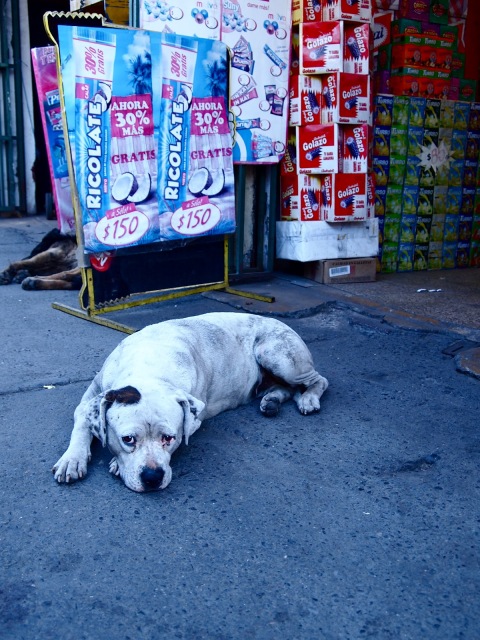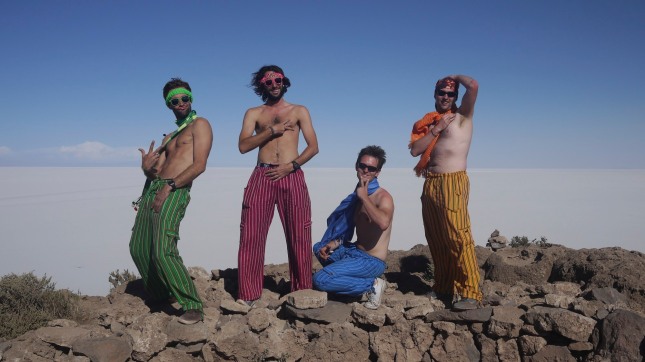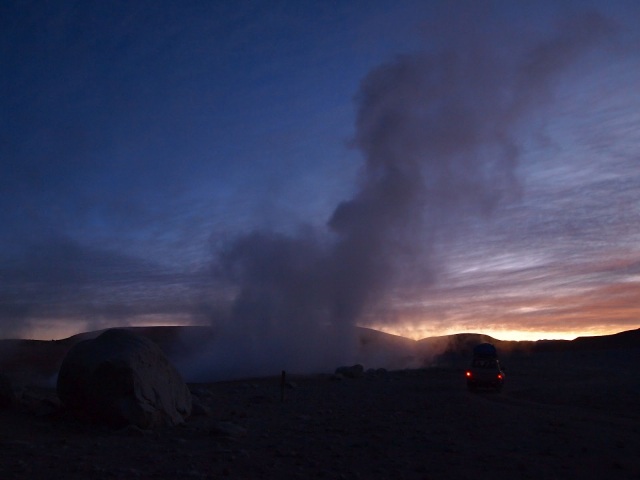Buenos Aires. Everyone knows this South American capital as the home of tango. But there is much more to this chaotic metropolitan city than tango. During the few days I spent in Buenos Aires, I have to admit that I didn’t even go to see a tango show (I’m sure one of my good friends, who is an amazing tango dancer, would be shaking his head in disgust whilst reading this). Rather, my time in Buenos Aires was filled with perusing through the San Telmo Markets, wandering through La Recoleta Cemetery, visiting the botanical gardens, ravelling at La Boca and just simple meandering through the streets of Buenos Aires, with a bit of shopping and ice-cream eating thrown in.


The highlight of my stay in Buenos Aires was by far the Sunday markets at San Telmo. San Telmo is a neighbour of Buenos Aires, located roughly between Av. Independencia, Av. Caseros, Piedras and Av Ing Huergo. It is the oldest and one of the best preserved neighbourhood in the city. It was originally an industrial area of the working class, which became increasingly popular in the mid 19th century amongst the middle class. An epidemic of yellow fever swept through the neighbourhood in 1871, which resulted in many of the well-to-do relocating to other areas of Buenos Aires. This resulted in many homes being left vacant, which were filled by British, Italian and Russian migrants arriving in the late 19th and early 20th century. In the mid-20th century, the neighbourhood’s bohemian atmosphere began to attract local artists, which resulted in growing cultural activity in the area. Today San Telmo characterised by its colonial building, cobbled streets, bohemian atmosphere, tango halls and of course their famous Sunday antique and arts markets.
The markets are on every Sunday, I’m assuming, rain, hail or shine. The markets are concentrated around Plaza Dorrengo and run the length of Calle Defensa. Plaza Dorrengo is where to head to first, especially if you’re after antiques and vintage collectables. There is everything and anything you can imagine. From vintage soda bottles, to stamps, match boxes, cameras, jewellery, porcelain, glassware, clothing, silverware, vases, phones, clocks etc, etc. The quality is good and the prices are dear. But the selection is amazing, at atmosphere un-matchable and looking at all these items makes one think of all the people who, over the centuries, have lived in this amazing city. Whilst ogling over the antique markets, the sound of tango could be heard. Right beside the antique markets was a tango orchestra – complete with pianist, cellist, and hand accordion players – who’s playing was absolutely superb. I guess I’m no authority on the matter, but from my own subjective viewpoint, I thought they played extremely well and I found it difficult to remove myself and continue up Calle Defensa to see the rest of the markets. The atmosphere in Calle Defense was somewhat different that of Plaza Dorrengo. Storeholders were selling their goods literary on the streets, instead of in well set-up stalls, antiques were put aside in favour of hand-made items, bric-a-brac, leather goods, CDs (the general things you find at markets), the cultured atmosphere was replaced by haggling and crowds and the sound of tango was overtaken by that of contemporary rock and rap music. Although this part of the markets was vastly different from Plaza Dorrengo, it still had it’s own charm. The best of which was big tubs of dulce de leche. If you haven’t been to South America, you may not know about this sickly sweet spread. It’s basically a caramel made from condensed milk. I first tried it in Peru, where it is called manjar, and instantly fell in love. I was amazed to see that they were selling big tubs of it at the San Telmo markets, or even better, served in ice-cream waffle cones for about US$1. Yum-my at a bargain! Of course I had one, or maybe two.









One of my best loved places in Buenos Aires was La Recoleta Cemetery. Like Pere Lachaise Cemetery is Paris, which I absolutely adore, La Recoleta has an unusual charm, even though some may think spending an afternoon is a cemetery rather morbid. Especially since there are many coffins which you can actually see and touch. I was rather disturb and uncomfortable at seeing this – as you can see by some of the following photographs, there are a number of coffins which have been exposed to the elements, due to the wear and tear, as well as perhaps the odd vandalism of a number of the mausoleums. It was interesting to see how these tombs were constructed – many were build above ground, but a few of which I peeped into, seemed to have stairs leading downwards, beneath the ground. Some were simple and plain, and others were very ornate, lined with gold and marble. Many mausoleums appeared to be well maintained and lovingly cared for, whilst others were obviously forgotten and have fallen into disrepair. La Recoleta cemetery was inaugurated in the mid-19th century, taking up 14 acres of land in the middle of today’s cosmopolitan Buenos Aires. The cemetery contains many elaborate and decorative mausoleums, fashioned in may styles including Art Deco, Art Nouveau, Baroque and Neo-Gothic. These mausoleums, which usually house the remains of multiple members on one family, are arranged in sections, similar to city blocks, which wide tree-lined avenues, fanning off into little side streets. Many notable Argentine personalities are buried in the cemetery, the most famous of which being Eva Peron. On weekends, the parkland in front of the cemetery is home to some amazing arts and crafts markets (I have to admit I spent a bit of money and bought a beautiful stone tea set) as well as some local street food – not forgetting the famous Argentine BBQ.

















Although La Boca is extremely tourist focused, I rather enjoyed spending an afternoon amongst the hoards of tourists, tango dancers, Argentine BBQ restaurants and the sound of tango being played as you stroll down the street and marvel at all the sights, sounds and smells around you. This neighbourhood of Buenos Aires, located in the city’s south-east near the old port, was originally home to migrants from Genoa, Italy. Today, the neighbourhood is well known for La Bonbonera, the home of the Boca Juniors football team, it’s colourful architecture and its pedestrian street, The Caminito. I was initially somewhat apprehensive about visiting La Boca, especially after reading my Lonely Planet travel guide warning about frequent muggings in the neighbourhood, as well as some fellow travellers relating stories about others being held-up a gun point for a digital camera or a wallet. So I grabbed a fellow traveller I met on my adventure, who looks rather scary anyway, to come with me to La Boca. But surprisingly, the neighbourhood seemed rather safe and full of life – that is to say, along El Caminito and the surrounding streets, which we didn’t stray far from, getting a taxi to and from there. The area was full of life, and full of tourists too. After taking a few typical Buenos Aires shots with my camera, we sat down to an Argentine feast of BBQ meats of every shape and form. These people sure do love their meat and take great pride in cooking and serving it to perfection.
This is only a sneak peak of Buenos Aires – there are many more things to see and do in this big and vibrant city. I only had a few short days there, so I was unable to see it all.















Words & Photography by Jade Spadina





























































































































































































































































































































